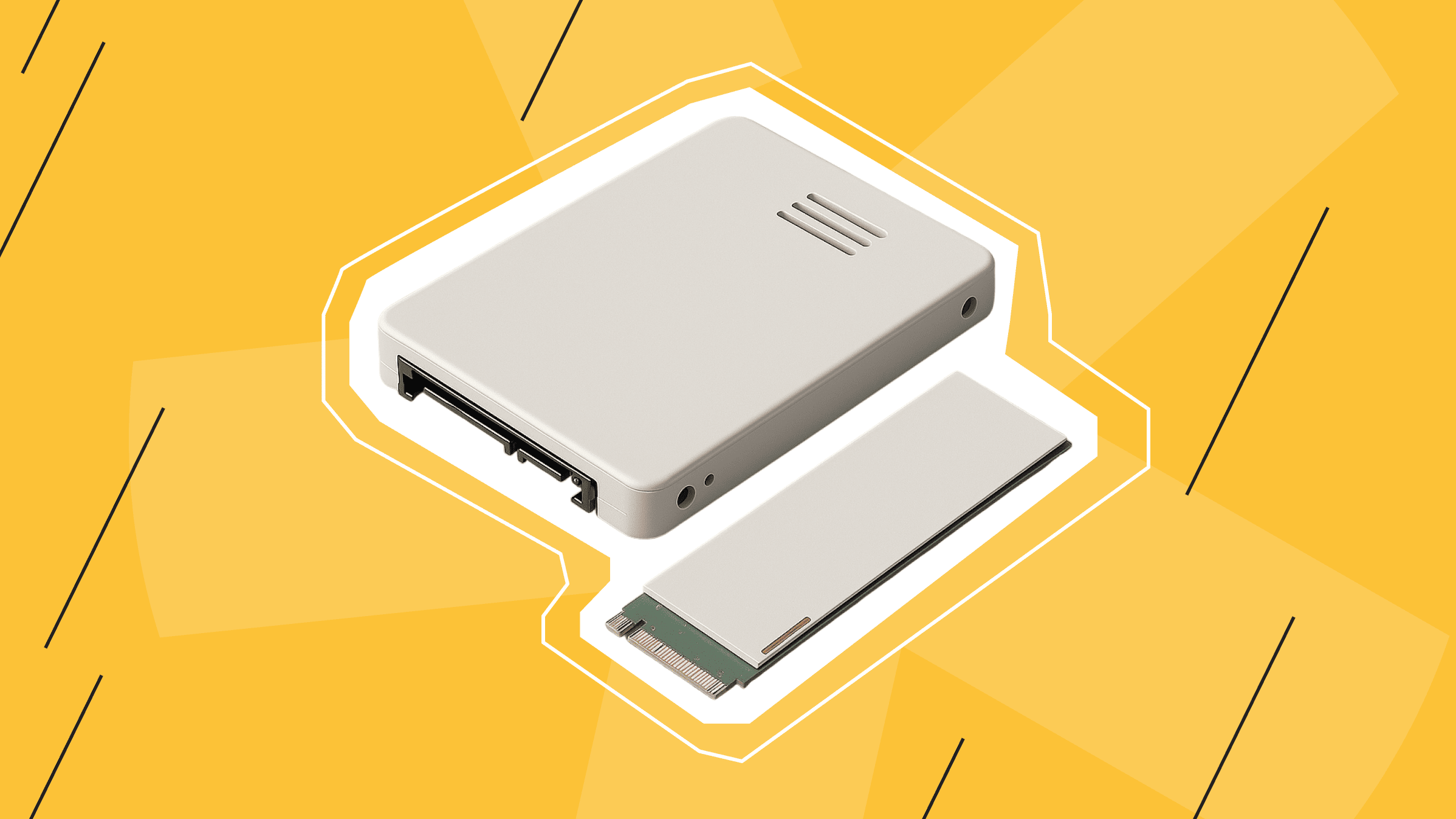
This article isn’t here to scare you off cheap hosting. No horror stories — just a few facts that might come as an unpleasant surprise.
Not all cheap hosting offers are bad! In some cases, a low-cost server is the smartest choice. Paired with a reliable provider, it can save you money and deliver real benefits.
A quick note before we start:
Throughout this article, we’ll focus on cheap VPS, since it’s the most flexible and widely available form of budget hosting. While shared hosting sometimes costs less, VPS has fewer pitfalls and offers more control, including better stability and scalability. It’s a better benchmark for comparing costs, value, and hidden trade-offs.
Virtual Private Servers run on virtualization technology. Using Kernel-based Virtual Machine (KVM) or similar tools, a single physical machine is split into several isolated virtual servers, each with its own resources and setup. That’s why VPS is more affordable than a dedicated server.
Now let’s bust a few myths.
Cheap Hosting Isn’t Always a Smart Deal
Low prices are tempting, but cheap virtual private hosting can come with unexpected trade-offs. A server for just a couple of dollars a month may sound great, but ultra-low prices often hide technical compromises and hidden costs.
The problem isn’t the price itself; it’s trusting it blindly without checking the details.
What “Cheap VPS” Really Means
The term “cheap Virtual Private Server” is relative. Today, most providers start around $5 per month for a basic VPS setup (1 virtual CPU core and 1–2 GB RAM). Anything significantly below that, like $2 per month, falls into the ultra-budget category. These plans usually include 1 GB RAM or less and a single virtual CPU (vCPU) core.
For comparison, is*hosting’s lowest-tier VPS plan starts at around $6 per month.
That $2–3 pricing is only possible when providers cut their own costs to the max, so let’s see what gets sacrificed.
What You Really Get for $3 per month: An Honest Breakdown

A cheap Virtual Private Server usually means minimal hardware and stripped-down service. Here’s what’s typically included in those $3 per month plans:
- CPU. 1 vCPU at ~2–3 GHz. This is just a slice of a shared process, not a full physical core.
- Storage. 10–20 GB on SSD or HDD. Many providers now offer SSDs even in budget plans, but space is limited.
- Network and Traffic. “Unlimited” traffic is often capped by fair use policies or limited speeds (e.g., 100 Mbps). Network performance can vary, especially in overcrowded data centers.
- Operating System. Usually Linux only. Cheap Windows VPS hosting costs more due to licensing fees.
- Management and Support. Most are unmanaged VPSs. The provider gives you a server that has a Linux OS, and you configure everything else yourself. Control panels may not be included. Backups are your responsibility. Support is often slow or limited to ticket queues.
The bottom line is that for $3 per month, you’re getting the absolute minimum, and even that depends on the provider’s honesty. Some omit the fine print about resource caps or support limits.
Now Compare That to is*hosting
We offer a cheap VPS starting at $6.99 per month, or $5.94 per month if billed annually. That includes:
- Free weekly backups.
- Your choice of a free or licensed control panel.
- Free server management (with a panel installed).
- Free basic DDoS protection (if hosted in the Netherlands).
- Real, responsive 24/7 support from actual humans.
When you do the math, it’s not just about price. It’s about what you actually get out of it.
The Fine Print of Cheap Hosting: What No One Tells You

A low VPS price often comes with trade-offs that aren’t mentioned on the plan’s sales page. The following are the key pitfalls of cheap VPS hosting.
Overselling, or Sharing More Than You Think
Overselling is the main way budget providers cut costs. They allocate more resources than the server physically has, assuming not all users will max out their allocations at the same time.
This practice gets especially aggressive on platforms like OpenVZ, where both RAM and CPU can be oversold multiple times. That means multiple users are fighting for the same pool of memory and processing power. During traffic spikes, no one gets what they need, and everyone suffers.
KVM-based virtualization is generally fairer: RAM is strictly allocated and cannot be oversold. But providers may cap CPU time or use soft limits to throttle usage.
Hidden Performance Limits
Overselling isn’t the only trick. Many cheap hosting providers silently throttle your server during heavy workloads.
Your plan might allow CPU bursts, but once usage remains high for too long, performance drops. That’s often called “fair share CPU;” in other words, it’s shared and not guaranteed.
It’s not always disclosed, but user reviews sometimes mention deliberately reduced disk speeds or network caps on low-cost VPS plans.
Lower Reliability and Uptime Risks
Budget VPS platforms tend to crash more often. Reasons vary, including overloaded nodes, failing hardware, or power issues in low-tier data centers.
Premium providers usually offer 99.99% uptime guarantees. The cheapest ones do not.
Those “savings” can turn into lost revenue. According to Atlassian, even one minute of downtime can cost small businesses between $137 and $427.
Poor Support or None at All
Ultra-budget VPS providers often skimp on support. Expect slow ticket responses and minimal (or no) help with server setup and troubleshooting.
At best, you may get a knowledge base and delayed replies to urgent issues.
Extras That Shouldn’t Cost Extra
Features included in standard plans are often paid add-ons with cheap hosting. Backups and snapshots usually aren’t part of the deal unless you pay extra.
Even those flashy $2 per month offers often come with strings attached — like requiring a full year’s payment up front or hidden traffic limits buried in the fine print.
Bad Neighbors
Sadly, cheap hosting can attract more than just budget-conscious developers. Spammers, scammers, and shady operators love it too.
If your provider doesn’t vet users properly or cuts corners on VPS isolation, your server could end up on the same node as phishing kits, spam bots, or shady websites. That not only puts your IP at risk of being blacklisted, but also increases the chance of spillover issues like noisy neighbors, shared IP abuse, or even collateral damage from DDoS attacks targeting someone else.
In the end, all of this comes down to one thing: how much you trust your provider. When it comes to cheap hosting, that trust is everything.
When Cheap Hosting Is a Smart Choice

Despite all the risks we’ve covered, cheap hosting absolutely has its place. If you understand the limitations and use it for the right tasks, you can get great value for very little money.
Perfect for Test Environments, Learning, or Light Workloads
The best use case for a cheap Virtual Private Server is for lightweight or secondary workloads.
If a test server lags, the developer can wait or restart it. If a student server crashes, that may be a part of the learning curve. And if you’re running a small personal website on a budget VPS, you’ve made a conscious trade-off — saving money in exchange for handling resources yourself and upgrading later if needed.
Learning and Experimentation
Developers often require multiple servers to test apps across OS versions or configurations. Paying for high-end machines doesn’t make sense — a cheap Linux VPS or even an affordable Windows VPS is a better fit.
You can spin up one server with Ubuntu for $6, another with Windows for $10, and run your software in both. If something crashes or lags, it’s not a production environment, so there’s no harm done.
Beginner sysadmins, DevOps engineers, and tech hobbyists also use cheap hosting to learn. It’s the perfect sandbox for installing services, working in the command line, or troubleshooting without fear of breaking anything important. Performance won’t be stellar, but getting hands-on experience is what counts.
For Light Sites, Bots, and Backups
A budget VPS can easily handle a personal blog, landing page, or simple static website, especially when traffic is low.
It’s also great for lightweight tools like self-hosted VPNs, proxies, or Telegram bots — anything that doesn’t demand heavy resources or mission-critical uptime.
In some cases, cheap hosting isn’t used for your main app, but for infrastructure tasks. Off-site backups are a great example — even a basic server is better than none. And with prices this low, you can run multiple VPS instances for redundancy. If one goes down, the others stay up, and you still stay on budget.
Fair VPS Plans with Transparent Specs

Can cheap hosting still be honest? If you’ve found a trustworthy provider, absolutely! Here’s what that looks like:
- If the provider clearly states that a plan comes with shared CPU, or explains what kind of load is acceptable, you’ll face fewer unpleasant surprises down the line. Honest providers won’t promise the moon for $2. It’s still a cheap VPS, but prices aren’t magically low.
- Reliable providers typically use KVM-based virtualization even for budget VPS plans. With KVM or Xen, RAM and storage are properly isolated and assigned, unlike OpenVZ, which can be used for aggressive overselling.
- A good provider tells you up front what’s included and what’s not. If backups aren’t part of the deal, they’ll say so. If the control panel isn’t included, they’ll make that clear before checkout. There will be no last-minute upsells and no hidden limits.
Of course, even an “honest” VPS will be limited in capacity — that’s just the nature of budget hosting. But the difference is, you know what you’re getting.
If a plan says 1 GB RAM, you get 1 GB — not 512 MB on a good day. Clear, upfront specs let you assess whether the plan fits your needs, or whether you should go for a higher tier.
At is*hosting, we only use KVM virtualization, and every plan clearly states that. Our Service Level Agreement (SLA) gives you all the necessary details before you place an order.
Managed VPS
Everything is under control. We take care of configuration, updates, and monitoring — you focus on your project.
Planning to Scale? Think Ahead with Cheap Hosting
Starting your project on cheap hosting is totally fine, as long as you plan for growth from the beginning. Even if 1 GB of RAM is enough today, a successful app or website will eventually need more power — so it’s smart to prepare now.
Step 1: Check upgrade options.
Ask your provider how scaling works. Many hosting platforms allow you to increase resources without switching plans entirely. You might be able to add more RAM, CPU cores, or storage — or move to the next tier without needing to reinstall everything or manually migrate your data.
Step 2: Consider horizontal scaling.
One great thing about virtual servers is that you can run several at once without breaking the bank.
Instead of one powerful $24 VPS, you might spin up four cheap hosting plans at $6 each and then use a load balancer to distribute the work.
For web services or microservice architectures, that setup can work better (and be more fault-tolerant) than a single large machine.
Step 3: Know when to move on.
Eventually, it might be time to graduate from your budget server. Cheap VPS can be a fantastic launchpad, but it’s not built for high-traffic production environments.
If your startup gains traction, be ready to level up. That could mean switching to a more robust VPS plan, moving to a dedicated server, or rethinking your data strategy altogether.
You’ve already saved money at the start. Don’t let that early win turn into a bottleneck.
How to Choose Cheap Hosting Without Regret

So, how do you find cheap hosting that’s worthwhile? Most of the time, it comes down to reputation. If a provider is well-known in the tech community or ranks highly on independent review platforms for delivering what they promise, that’s already a strong signal.
What to Look For in Budget VPS Hosting
Here’s what really matters:
- Provider reputation. Check how long the company has offered VPS hosting. Look for real user reviews, especially from people who have tested long-term performance.
- Virtualization type and resource guarantees. As we’ve covered, the hypervisor matters. Look for KVM or similar virtualization with real isolation and fair resource allocation.
- Hardware and infrastructure quality. Try to find out what hardware your VPS will run on. If the provider openly mentions modern CPUs like Intel Xeon E5 or AMD EPYC, RAID-protected SSD/NVMe storage, and power redundancy, that’s a green flag. It means even their cheapest VPS hosting runs on solid machines.
- Control panel and OS options. Budget servers often don’t include a full-featured panel. Instead, you may get basic tools for rebooting or reinstalling via a simple dashboard or API. Make sure you’re comfortable managing the server this way.
- SLAs and support. Check if the provider offers a clear uptime guarantee. Look at the availability of support channels. Do they respond quickly, or only during business hours?
- Backups and recovery options. Many low-cost plans don’t include backups, so the responsibility is on you — unless you’re with is*hosting, of course. We’ve got your back.
Before you commit, do a bit of research. Your goal is to find a provider that doesn’t play games — someone who gives your cheap hosting the best shot at staying stable and reliable, even on a tight budget.
If you're looking for a balance between price and peace of mind, is*hosting is a solid choice. Enjoy transparent server specs, free admin help, weekly backups, 40+ locations, and support that actually solves problems instead of just sending canned replies.
Virtual Private Server
Maximize your budget with our high-performance VPS solutions. Enjoy fast NVMe, global reach in over 40 locations, and other benefits.
Linux vs. Windows VPS: What’s Cheaper?
When it comes to cheap hosting, the operating system you choose has a big impact on the total cost. In most cases, a cheap Linux VPS is the better pick for budget-friendly servers — unless you specifically need Windows for your application.
Windows VPS is more expensive due to licensing and resource use. Windows Server is a commercial OS, which means providers must pay Microsoft for each licensed instance. That fee is passed on to you as part of the monthly price.
For example, the lowest Windows VPS plan at is*hosting starts at $11.99/month, or $10.19/month with annual billing.
On top of that, 1 GB of RAM is barely enough to run full Windows with a graphical user interface (GUI). That’s why honest providers typically offer Windows plans starting with at least 2 GB RAM.
Some budget providers offer 512 MB RAM with Windows Server 2019 Core — a stripped-down version without a GUI. Sure, it’s cheaper, but it’s console-only, and unless you’re a sysadmin, managing it won’t be fun.
For most tasks, Linux VPS is more reasonable: it’s cheaper (no OS surcharge), uses its modest resources more efficiently, and offers a rich selection of free software.
Conclusion: The Problem Isn’t the Price
Cheap hosting is a tool, and with the right approach, it can successfully serve your needs. Thousands of people use budget virtual servers every day for learning, testing, or running small websites — and they’re happy not to overpay. A low price isn’t a problem in itself.
However, you can’t expect budget servers to deliver the same performance and service as solutions that cost many times more.
Cheap hosting stops being “cheap” when it leads to downtime, lost customers, and endless stress.
So, what can you do? Arm yourself with knowledge and realistically assess your needs. If you’re running a small project and want to save money, go ahead and get a cheap VPS. Just make sure to monitor its performance, stay ready to optimize, and scale up when needed. But if speed and reliability are critical, it’s better to upgrade before problems arise.
The takeaway is simple: a low VPS price works fine if you choose it consciously, for the right use case, and with a clear understanding of its limits. Ideally, you want a balance between affordability and a provider you can actually trust.
VPS
Choose a suitable configuration and enjoy all the benefits of a virtual private server.
From $5.94/mo

